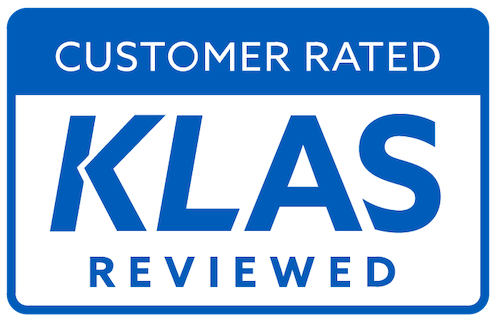Outsource Medical Record Abstraction and Indexing
We are a team of medical data abstraction & indexing experts with over two decades of experience in working with hospitals & health systems in the USA. With years of medical records scanning and indexing experience under our belt, our trained & certified offshore team ensures optimum delivery of quality & productivity at extremely favorable pricing.
Talk to an HIM expertCut down your HIM operational cost by at least 40%

Do More With Less: Streamline Medical Record Abstraction & Indexing
Dexit helps you keep expertise in-house, boost team capacity, and reduce costs year after year.
Here’s Why 314e Is the Solution You’ve Been Looking for

Committed to Ensuring Compliance With Regulatory Measures
We hold a strong commitment to maintaining strict compliance with regulatory standards like HIPAA, the HITECH Act, The Security Rule, and The Privacy Rule to ensure that the privacy and security of Patient Health Information (PHI) are consistently protected.

Learn About Our Process
Unveiling Our Methodology Behind Medical Record Abstraction

- 1
Data Identification
As the first step, we identify the specific clinical data elements that need to be extracted.
- 2
Data Review
The medical records are then reviewed to locate and extract the relevant information.
- 3
Data Collection
Data is then collected and recorded in a systematic manner, which involves using specific data collection forms or templates to ensure consistency and accuracy.
- 4
Data Verification
Once the data has been collected, it is then verified by the team lead to ensure that it is accurate and complete.
- 5
Quality Control
Finally, a quality control review is performed by our quality control team to ensure that the data abstraction has been performed accurately and consistently.
Unveiling Our Methodology Behind Indexing Medical Records
- 1
Identification
The first step in HIM indexing is to identify the documents that need to be indexed.
- 2
Review
Once the documents have been identified, they are reviewed to identify key data elements that need to be indexed.
- 3
Assigning and Verification
Index values are assigned to each key data element, and then verified to ensure that they accurately reflect the information in the document.
- 4
Organization
After indexing, the documents are organized in a manner that makes them easy to search and retrieve.
- 5
Quality Control
A quality control review is performed to ensure that the indexing has been performed accurately and consistently.


We Saved $775,000/- Annually for a Minnesota Nonprofit Healthcare Organization
Our team of knowledgeable and skilled clinical data management service providers efficiently eradicated backlogs while maintaining high quality and productivity standards throughout the project. We achieved this in less than 3 months.
Download the Case Study ->100% of Our Customers Say 314e Exceeded Expectations.
*Based on KLAS Survey Report 2021

Looking for HIM Document Abstraction and Indexing Services?
Let the most experienced team get the job done for you.
Talk to our HIM Document Indexing consultantFrequently Asked Questions
Medical records are documents that contain information about a patient’s medical history, treatments, diagnoses, and test results. Abstracting medical records can help to identify key information and patterns in a patient’s medical history.
Medical research articles are written by researchers and clinicians to report the results of their research. The abstracts of these articles can provide a summary of the key findings and implications of the research.
In healthcare, three commonly used indexes are:
- Patient Index: This index includes information about patients, such as their name, date of birth, contact details, medical record number, and other identifying information. It serves as a reference for locating and retrieving patient records and helps ensure accurate patient identification and record-keeping.
- Provider Index: This index contains information about healthcare providers, including their names, contact information, specialty, and other relevant details. It helps in tracking and managing provider information, facilitating communication, and ensuring proper documentation of provider credentials and qualifications.
- Document Index: This index includes information about healthcare documents, such as the type of document, date, author, subject, and other relevant details. It serves as a reference for locating and retrieving specific documents, ensuring efficient document management, retrieval, and auditing for compliance and regulatory purposes.
These three indexes play a critical role in healthcare operations, facilitating accurate and efficient management of patient records, provider information, and healthcare documents, leading to improved patient care and organizational efficiency.
Various types of documents from which medical data is abstracted include:
- Clinical trial reports: These documents summarize the methods, results, and conclusions of clinical trials, which are research studies involving human participants.
- Medical records: Medical records are documents that contain information about a patient’s medical history, treatments, diagnoses, and test results. Abstracting medical records can help to identify key information and patterns in a patient’s medical history.
- Research articles: Medical research articles are written by researchers and clinicians to report the results of their research. The abstracts of these articles can provide a summary of the key findings and implications of the research.
- Case reports: Case reports describe unique or unusual cases of medical conditions or treatments. Abstracting case reports can help to identify key clinical features, diagnostic methods, and treatment outcomes.
- Medical guidelines: Medical guidelines provide evidence-based recommendations for the diagnosis, treatment, and management of various medical conditions. These guidelines’ abstracts can help identify key recommendations and provide an overview of the evidence supporting them.
The process of HIM indexing followed by 314e includes:
- Identify the documents to be indexed: The first step in HIM indexing is to identify the documents that need to be indexed. This can include medical records, lab reports, imaging studies, and other clinical documents.
- Review the documents: Once the documents have been identified, they should be reviewed to identify key data elements that need to be indexed. This includes diagnoses, procedures, medications, and other relevant information.
- Assign index values: After the key data elements have been identified, index values should be assigned to each element. Index values are metadata that are used to categorize and organize the documents within the system.
- Verify the index values: Once the index values have been assigned, they should be verified to ensure that they accurately reflect the information in the document.
- Organize the indexed documents: After indexing is complete, the documents should be organized in a manner that makes them easy to search and retrieve. This can include creating indexes, assigning keywords or tags, and using filters or search tools to find specific documents.
- Perform quality control: Finally, a quality control review should be performed to ensure that the indexing has been performed accurately and consistently. This includes checking for errors and omissions and ensuring that all relevant information has been indexed.
Clinical data abstraction involves the process of extracting and recording important clinical data from medical records and other sources. Here are the general steps involved in clinical data abstraction:
- Identify the clinical data elements to be abstracted: The first step in clinical data abstraction is to identify the specific clinical data elements that need to be extracted. This includes diagnoses, procedures, medications, lab results, imaging studies, and other relevant clinical data.
- Review the medical records: Once the data elements have been identified, the medical records should be reviewed to locate and extract the relevant information. This may involve reviewing multiple sources of information, such as physician notes, lab reports, imaging studies, and medication orders.
- Collect the data: After the data has been located, it should be collected and recorded in a systematic manner. This may involve using specific data collection forms or templates to ensure consistency and accuracy.
- Verify the data: Once the data has been collected, it should be verified to ensure that it is accurate and complete. This may involve cross-checking the data against other sources or consulting with other healthcare providers to confirm the accuracy of the data.
- Enter the data into a database or system: After the data has been verified, it should be entered into a database or system for storage and analysis. This may involve using specific software programs or electronic health record systems to enter the data.
- Perform quality control: Finally, a quality control review should be performed to ensure that the data abstraction has been performed accurately and consistently. This includes checking for errors and omissions and ensuring that all relevant information has been abstracted.





